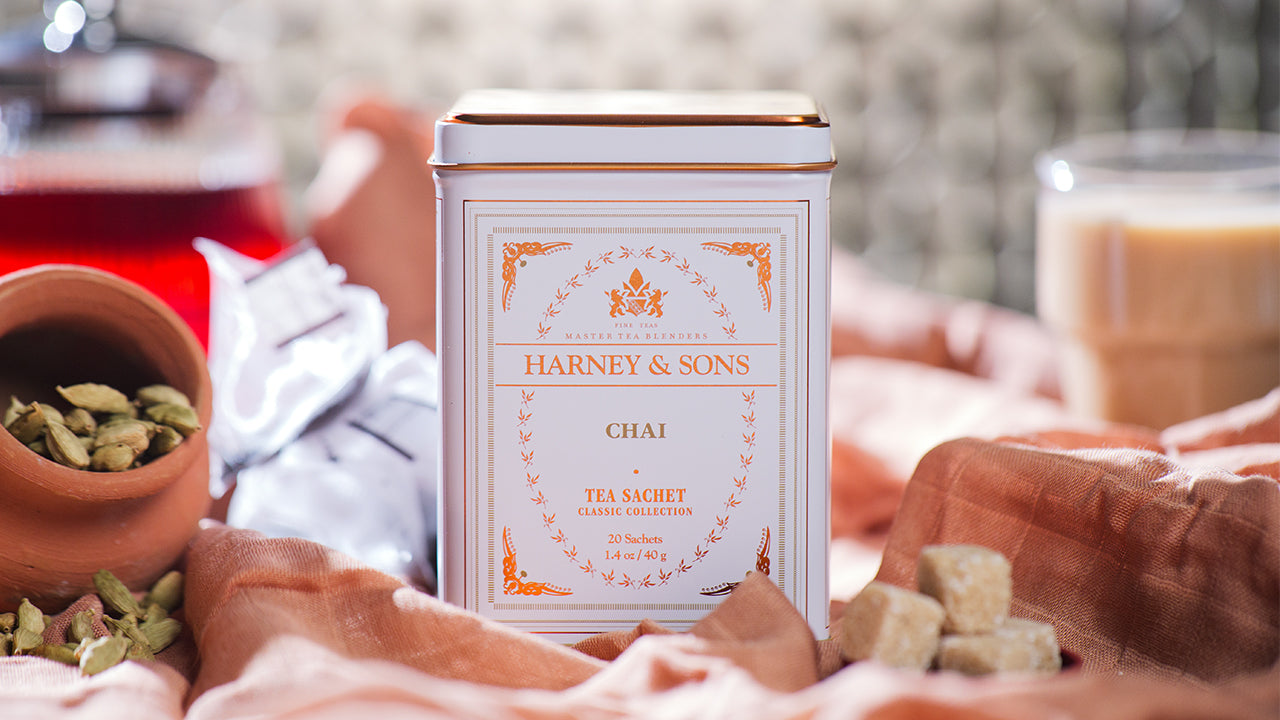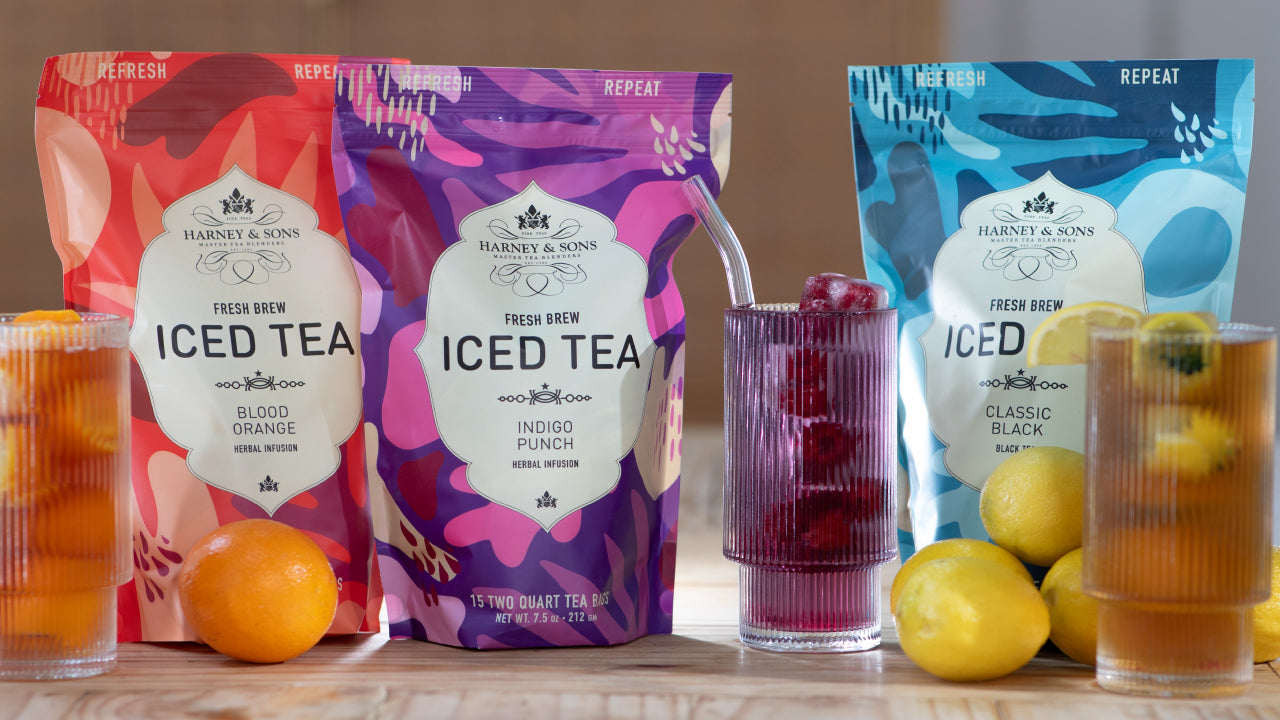If you’re not familiar with white tea, perhaps it’s because white tea is one of the rarest teas in the world. Let’s right this situation by providing you with all kinds of white tea knowledge. Of course, the best way to understand this special beverage is to drink it, but let’s spill a little white tea knowledge first.

What Is White Tea?
While white tea comes from the Camellia sinensis plant just like black, green, and oolong teas, that is where the similarities end—something like cousins at a family reunion: related, but otherwise not that much in common.
White tea is primarily made from the young tea bud, plucked just before the leaf opens on the stem. Where green and black teas draw their more robust qualities from mature leaves, white teas consist of incipient leaves called “buds,” or “tips.” If left unplucked, within a week to ten days this bud would unfurl into a beautiful leaf. Consisting almost exclusively of only buds (a few white teas are not bud-only), white teas are the simplest yet also among the most complex. Their sizable tips are a product of centuries of selective propagation. Buds play an important role in many green and black teas; harvested along with mature leaves, they give those teas refined sweetness and a softer body. White teas, therefore, provide a chance to sample an important component of tea, hardly adulterated. Barely processed, light, and refined, they present one of the purest expressions of the tea plant.
While white tea isn’t truly white—the tea buds (which do not have fully mature chlorophyll) grow to a bright green color, fade to silver, and brew to a pale yellow. The liquor yields not only the lightest color, but also the leanest body of all teas, a delicate juxtaposition to the creaminess of oolongs and the brisk pucker of British Legacy Teas (for more information on British Legacy Teas and all sorts of tea knowledge, pick up a copy of my dad’s book, The Harney & Sons Guide to Tea). Their aromas and flavors are wonderfully subtle, requiring careful attention. Look for gentle sweet notes ranging from honeysuckle to light maple sap. The delicacy of white tea leaves allows wonderfully subtle flavors to flourish in your freshly brewed cup.
Fun white tea facts: to help the buds mature into leaves, the plants furnish them with an extra shot of glucose, a sugar boost that makes the buds much sweeter than a mature leaf. To protect the buds from sun and bugs, the plants also provide them with a downy soft coating of tiny hairs called “trichomes.” These trichomes give the buds a soft fuzziness like pussy willows and can sometimes coat dry tea leaves in a fine, pale dust. The downy fur helps limit water loss and may also deter hungry bugs from gaining access to the nutrients within. To further deter predators, buds also contain extra caffeine and polyphenols, a natural sunblock and bug repellent. White teas are, therefore, slightly more caffeinated than green and black teas. More on that later.
Where Does White Tea Come From?
Our tea-buying trips to China would not be complete without a stop to visit our friends in the city of Fuding, the capital of white tea. Fuding is located in the Fujian province, where the very best white teas come from. White teas have become so popular, however, that tea makers have begun making them all over the world, increasingly from Sri Lanka in South Asia and most recently in Kenya.
There has been a remarkable transformation of Fuding because of the increased demand for white tea. The Chinese have taken a fancy to aged white tea, and that has created prosperity. Tea was everywhere on our last visit, and even professional tea merchants like us learned a thing or two more about white tea than we knew before we arrived.
How Is White Tea Made?
As we mentioned earlier, the unopened white tea buds are hand-plucked and “withered” or “air-dried.” During the drying, they turn from light green to iridescent silver as the immature chlorophyll within them dies off. The process of making white tea is quite different from black, green, and oolong teas that have more complex processes like steaming, rolling, or oxidizing. White tea is the least processed of all the teas.
Does White Tea Have Caffeine?
Don’t be fooled by its light color into thinking that white tea is lower in caffeine than, say, a black tea. Contrary to popular belief, many white teas can actually have higher levels of caffeine than black teas because they contain more tips or buds. Very “tippy” teas, or teas that have a high tips-to-leaves ratio, usually have higher levels of caffeine than teas that do not contain many tips. (That’s what we call a “caffeine tip!”) Also, the caffeine levels in white tea buds are slightly higher than that of green or black tea, which helps protect the plant from predators during early growth stages.
There are ways to mitigate the amount of caffeine in your cup of white tea, however, during the brewing process.

How to Brew White Tea
Classic white teas like Chinese Silver Needle, Ceylon Vintage Silver Tips, Artisanal Ceylon Argent, Mutan White, and King of Bai Mu Dan are all so delicate, they brew best at a low temperature and for a short period: around 175 degrees Fahrenheit and for only three minutes. This helps protect flavor and aroma. The water changes color so imperceptibly with white teas; you’ll find helpful information on what color you can expect the teas to be on our individual tea pages; just click on the “Mike’s Rating” section. For more flavor, add more tea, not time.

White Tea Blends
In addition to the well-known classics we listed above, at Harney we have created some wonderful white tea blends, like Venetian Tiramisu, Heirloom Bartlett Pear, Bee’s Knees, Winter White Earl Grey, and White Peach. Created uniquely by us, these white teas have added flavors that give them their own distinct taste. Check out all these white teas and more available for your enjoyment on our White Tea collection page.
How Should I Store My White Tea?
Storing white tea is no different than storing all types of tea. Our tea tins are airtight, keeping out things tea doesn’t like such as moisture, oxygen, absorbable odors, and light. We’ve got all kinds of helpful tips for storing tea and keeping it fresh in our Does Tea Go Stale? blog post. Some white teas can be quite an investment, so make sure you follow our tips for proper storage.
White Tea Health Benefits
Young tea buds, like the ones used to make white tea, naturally contain a greater proportion of polyphenols. These polyphenols help protect the young leaves from insects and provide higher levels of antioxidants. While further studies are needed, these antioxidants are thought to help prevent cancer and heart disease.
Here at Harney, we know that one of the benefits of white tea or any delicious cup of tea is the natural slowing down of life in the ritual of brewing a pot of tea. Most individuals find the process to be calming and relaxing, from heating the pot to sitting down to enjoy a cup for a moment to yourself or with a friend. Life doesn’t really get much better than that.
We hope you’ve enjoyed this dive into the world of white tea and again invite you to try some of ours to experience this rare and wonderfully unique beverage for yourself. Cheers!















